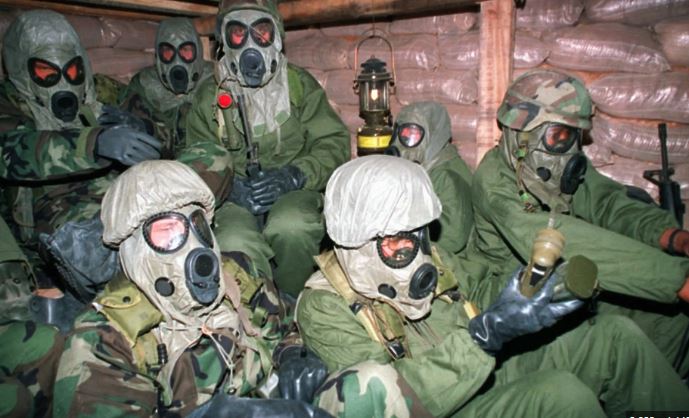Sarin gas, a highly toxic nerve agent, is one of the most dangerous substances used in chemical warfare. Developed in Germany in the 1930s, sarin is a colorless, odorless liquid that can evaporate into a lethal vapor. It disrupts the nervous system by inhibiting acetylcholinesterase, an enzyme crucial for nerve function. Understanding the hazards of sarin gas is vital for preventing its use and mitigating its effects in emergency situations.

The Hazards of Sarin Gas in Chemical Warfare
Health Risks and Symptoms
Exposure to sarin gas can have catastrophic effects on human health. Inhalation or skin contact with sarin leads to rapid onset of symptoms, including convulsions, muscle twitching, and respiratory distress. Individuals may experience a range of symptoms, from mild irritation to severe poisoning, which can result in death if not treated immediately. The rapid action of sarin means that emergency medical intervention is essential to counteract its effects and save lives.
Environmental Impact
Sarin gas poses significant risks to the environment. Its persistence in soil and water can lead to long-term contamination, affecting wildlife and ecosystems. Decontaminating areas exposed to sarin requires specialized procedures to ensure that residual toxins are neutralized and that the environment is safe for humans and animals. The environmental impact of sarin gas highlights the need for careful management and disposal of chemical agents to prevent lasting damage.
Handling and Safety Measures
Due to its extreme toxicity, handling sarin gas requires rigorous safety protocols. Protective gear, including respirators, gloves, and full-body suits, is essential to prevent exposure. Specialized training ensures that individuals working with or around sarin understand the risks and know how to implement safety measures effectively. Proper storage and containment are critical to prevent accidental releases and ensure that sarin does not pose a threat to people or the environment.
Regulatory Framework
International regulations, such as the Chemical Weapons Convention (CWC), aim to control and eliminate the use of nerve agents like sarin. The CWC prohibits the production, stockpiling, and use of chemical weapons, including sarin gas. These regulations are crucial for preventing the misuse of sarin and ensuring global security. Compliance with these regulations helps prevent the proliferation of chemical weapons and promotes international cooperation in chemical disarmament.
Emergency Response and Treatment
In the event of a sarin gas exposure, immediate and effective emergency response is critical. First responders must follow established protocols to decontaminate affected individuals and areas. Medical treatment involves administering antidotes such as atropine and pralidoxime to counteract the effects of sarin and support recovery. Prompt treatment is essential to mitigate the severe symptoms of sarin poisoning and improve survival chances.
Conclusion
Sarin gas represents a serious threat due to its high toxicity and potential for mass harm. Its effects on health, the environment, and the need for stringent safety measures underscore the importance of regulatory frameworks and emergency preparedness. By understanding the hazards of sarin gas and adhering to safety protocols, individuals and organizations can better manage the risks associated with this dangerous chemical and contribute to global efforts to prevent its use.




